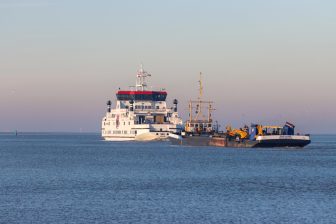National travel survey UK: 2006
London, United Kingom – The Department for Transport has 2007-08-30 published National Statistics on the travel habits of residents in Great Britain.
The main changes between 1995/97 and 2006 include:
- The average annual distance travelled by residents in Great Britain rose by 2 per cent to around 7,100 miles in 2006, reflecting a 7 per cent increase in the average length of trip from 6.4 miles to 6.9 miles;
- The average number of trips per person per year fell by 4 per cent to about 1,040;
- The average time spent travelling around Great Britain has increased by 4 per cent to 383 hours per person per year, or just over an hour a day;
- The proportion of households in Great Britain without access to a car fell from 30 per cent to 25 per cent in 2006;
- The proportion of women holding a full car driving licence increased from 57 to 63 per cent, while the proportion of men holding a licence remained at 81 per cent. Licence holding among all those aged 70 and over rose from 38 to 50 per cent;
- The proportion of the total distance travelled by car remained stable at around four fifths of the total distance travelled. Nearly a quarter of all car trips were shorter than two miles in length in 2006;
- The number of walking trips per person per year fell by 15 per cent;
- The number of trips by bus in London per person per year increased by 23 per cent while trips by bus outside London fell by 8 per cent;
- The number of commuting trips per person per year fell by 8 per cent, but the average trip length rose by 6 per cent and the average trip time increased by 15 per cent;
- The proportion of primary-aged children walking to school remained fairly constant at just over half and there was a slight increase, from 38 to 41 per cent, in the proportion being driven to school. For secondary school pupils, the proportion travelling to school on foot and by car stayed at around two-fifths and one fifth respectively;
- Although few people make domestic flights, the proportion using them at least once a year increased from 8 to 12 per cent. Nearly two-fifths of respondents made at least one international flight from Great Britain in 2006.
Background Information
1. National Travel Survey: 2006 is published by DfT. The report updates the main data series published last year from 2005 to 2006.
2. The 2006 National Travel Survey is the latest in a series of household surveys designed to provide a databank of personal travel information for Great Britain. The survey is part of a continuous survey that began in July 1988. During 2006, nearly 8,300 households provided details of their personal travel by filling in travel diaries over a period of a week, compared with nearly 3,500 households in 2001. Data prior to 2002 have been combined for three year time periods because of the smaller sample size. The increased sample size from 2002 enables most key results to be presented on a single year basis. The survey is designed to pick up long term trends and is not suitable for monitoring short term trends.
3. Travel details provided by respondents include trip purpose, method of travel, time of day and trip length. The households also provided background information, such as the age, sex, working status, and driving licence holding of individuals, and details of the cars available for their use.
4. In addition ‘National Travel Survey 2006 Technical Report’ is also published.
5. There are some discontinuities between data for 2002-2006 and previous years as a result of changes in the sampling methodology (eg stratification by population density rather than socio-economic group) and a change in contractor. These are explained more fully in the introduction to the Bulletin.
5. The Statistical Bulletin and Technical Report to be published on 30 August are available on the transport statistics web site: http://www.dft.gov.uk/transtat/personaltravel Hard copies of the 2006 Statistics Bulletin are available from Spencer Broadley, Zone 3/09, Great Minster House, 76 Marsham Street, London SW1P 4DR (020 7944 3097), or by e-mail: national.travelsurvey@dft.gov.uk
6. Focus on Personal Travel: 2005 edition presents an in-depth analysis of 2002-03 NTS and other data on personal travel. It is available from the TSO, priced £36 (ISBN 011 552658-7) and also free from the Department’s web-site http://www.dft.gov.uk/transtat/personaltravel
U las zojuist één van de gratis premium artikelen
Onbeperkt lezen? Profiteer nu van de introductieaanbieding voor € 10,- per maand.
Bent u al abonnee?



